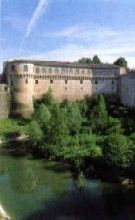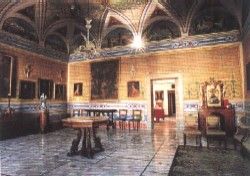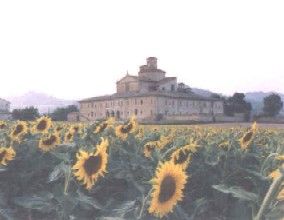
Palacio Ducal
|
organized. In a beautiful bend ot the Metauro river the unmistakable proportions of the Ducal Palace stand guard, built by Francesco di Giorgio Martini for Federico da Montefeltro and trasformed in the 16th century by Genga. The |
|
spacious rooms that sorround the Courtyard of Honour was the customary dwelling of the Dukes and confirm the important role played by Casteldurante in the Renaissance. Having laid the first stone to found the library in 1607. Francesco Maria II della Rovere himself lived in the town for a long time and died there in 1631; his remains are to be found in the Church of San Crocifisso. Today the Ducal Palace hosts, besides a precious library, a museum and art gallery containing manuscripts, geographical maps, global maps by Mercatore, a rich collection of over 2000 etchings and drawings, paintings and local majolica that make up a priceless heritage. But there are other esamples that are worthy of note, the first of which is the Chiesa dei Morti with its characteristic gothic portal which hosts inside the Cemetery of Mummies. This is a unique collection of corpses which were removed from their burial places at the |
Museo Diocesano |


